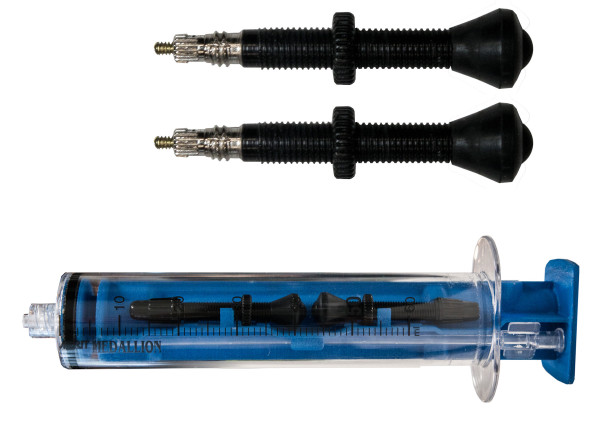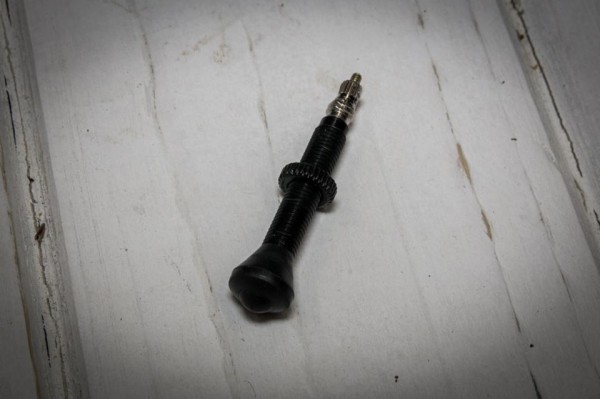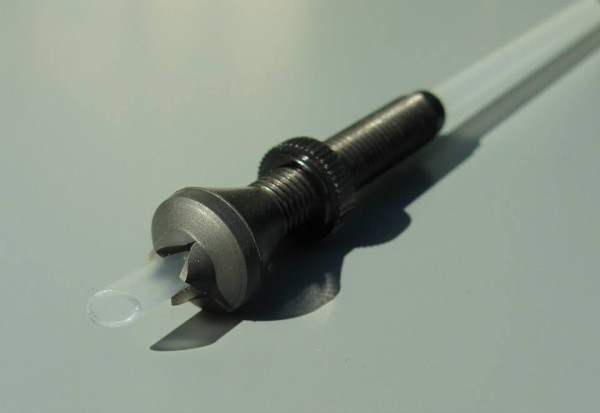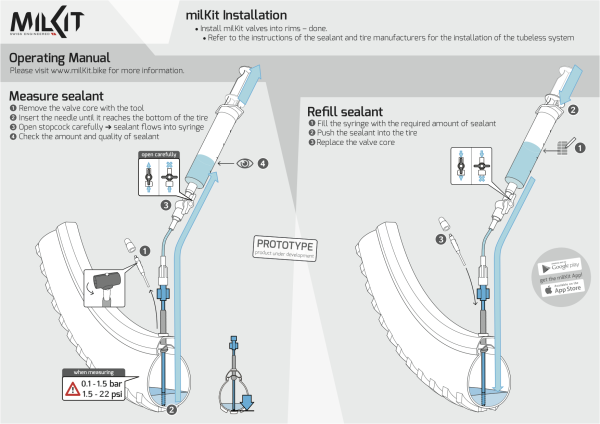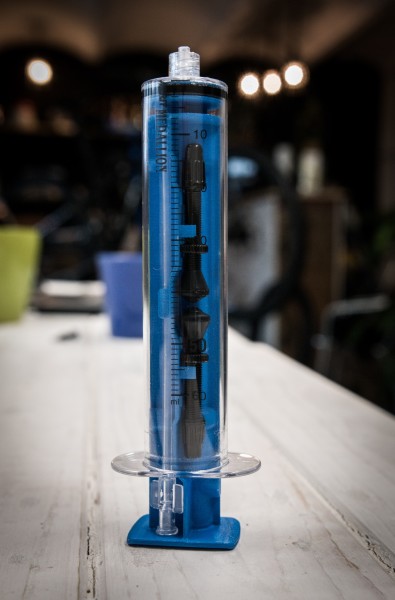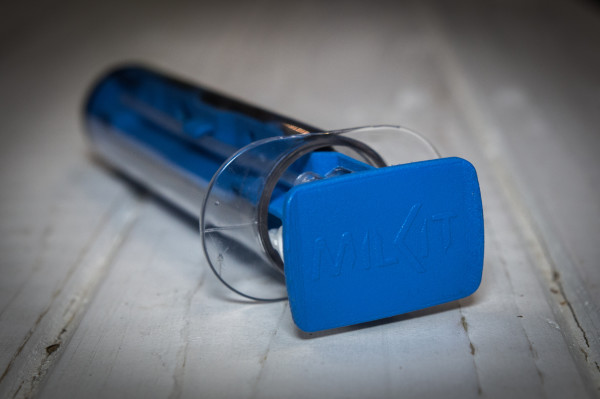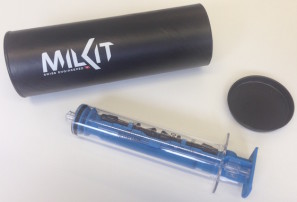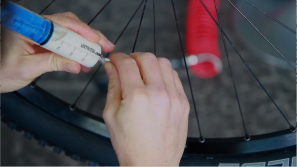If you ride mountain bikes, you probably ride tubeless. Or you’ve tried it. Or you have a friend who has used it. These days its fairly ubiquitous, but it’s not fool proof. Getting the sealant into the tire can still be a messy process. It’s one thing to add sealant to a brand new tire that is being installed onto a wheel, but adding sealant to a tire that is already mounted is where it gets tricky. You don’t want to break the bead so removing the tire is out. Without removing the tire, there is really no way to tell how much sealant is left – at this point it could be one big sealant urchin rolling around in the tire. After all of that, installing the sealant through the valve can leave a clog which can make airing up the tire a hassle in the future.
While it seems these are annoyances we’ve all learned to live with, engineer Pius Kobler and entrepreneur Sven Rizzotti thought there could be a better way. As often happens, necessity was the mother of invention after a flat tubeless tire in Moab caused Pius to rethink the ability to measure how much sealant was actually still in a tire. That quest to manage the amount of sealant led to the new valve design as well that could change tubeless as we know it…
On the 6mm presta valve itself, the biggest improvement is the addition of a rubber flap at the bottom of the valve. When combined with the straw from the syringe, it makes it so that the sealant can be installed or measured with the air still in the tire. Of course when you pull out the syringe, the flap closes up and prevents sealant from entering the valve so in theory it should never clog. According to MilKit the valves will fit any standard mountain bike wheels. *Update: As pointed out below, the valve core has an extension built in that opens the flap in order to adjust air pressure.
To use the applicator, MilKit recommends inflating the tire to 22 psi and then removing the valve core. The rubber flap will keep the air from escaping and then you can insert the syringe into the bottom of the tire. If you are checking the amount of sealant left in the tire, opening the valve on an empty syringe will cause the left over sealant to flow into the syringe due to the air pressure in the tire. At that point you can either push it back in if there is enough, or add additional sealant and top it off. This whole process can be done without breaking the bead, losing air pressure, or gumming up the valve. Seems like a huge step in the right direction.
Currently in the process of an IndieGogo campaign, the tubeless kits start at $49 for the complete MilKit with two valves and the refiller, but for the first three days there is a $39 Early bird option for the MilKit. Jump up to the $63 pledge for the kit with sealant. Kits are estimated to arrive in June.
